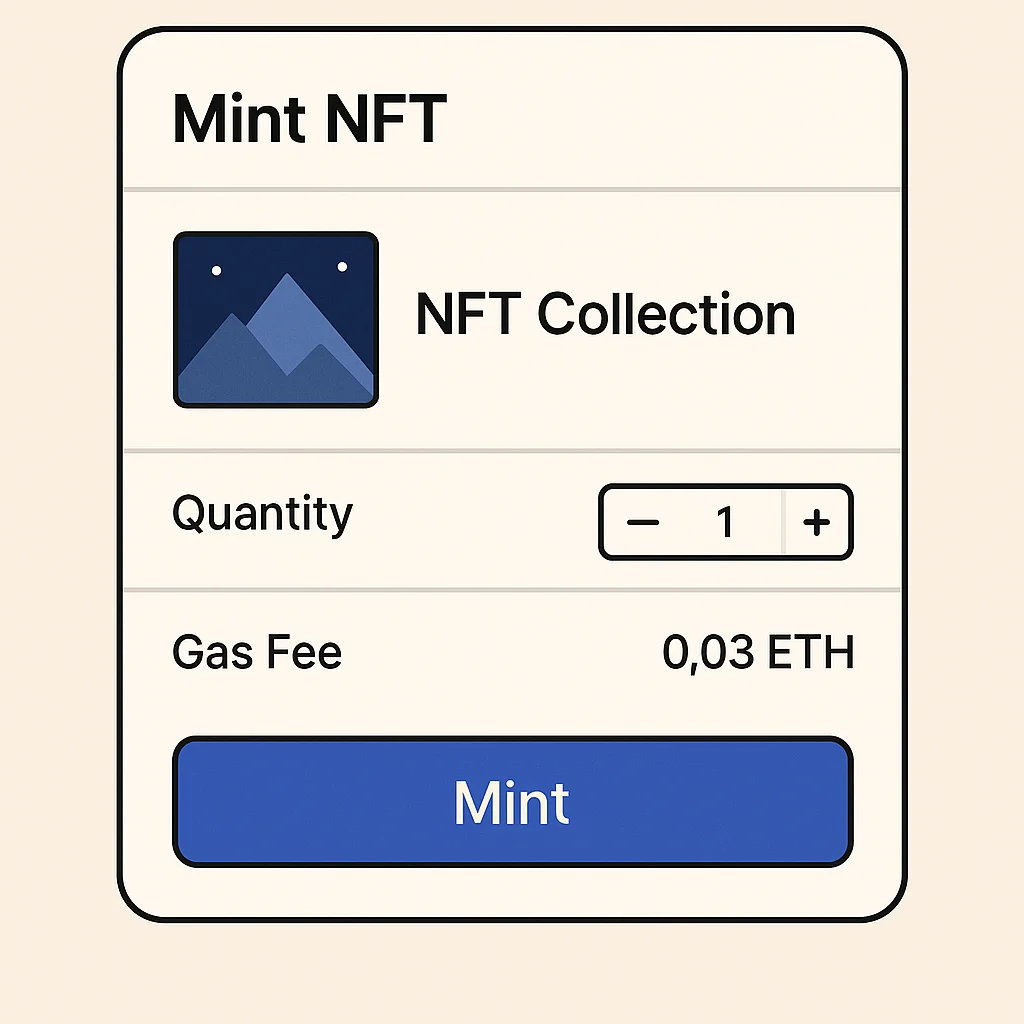Minting
Minting: Creating New Tokens or NFTs
Minting is the moment digital assets come into existence. Whether it’s new cryptocurrency tokens or unique NFTs, minting transforms code into valuable digital property.
Minting is the process of creating new tokens or NFTs by executing a smart contract function that adds them to a blockchain. It’s like printing new money, except the “printing press” is programmable code with predetermined rules.
How Minting Works
Smart contracts contain minting functions that create new tokens when called. For cryptocurrencies, this might happen automatically as rewards. For NFTs, users typically trigger minting by paying gas fees.
Minting limits prevent infinite token creation. Many projects set maximum supplies or minting rates to control scarcity and maintain value.
Minting costs include gas fees plus any fees set by the project. Popular NFT drops can cost $100+ in gas during high demand periods.

Real-World Examples
- NFT collections allow users to mint random traits for fixed prices
- Proof-of-Stake rewards get minted automatically for validators
- DeFi tokens often have ongoing mint schedules for liquidity incentives
Why Beginners Should Care
Minting at launch often provides better prices than buying on secondary markets, but it’s also riskier since you don’t know the final product quality.
Gas wars during popular NFT launches can make minting extremely expensive. Set reasonable gas limits to avoid overpaying during network congestion.
Failed minting transactions still cost gas fees, so understand the process before attempting to mint during high-demand drops.
Related Terms: NFT, Smart Contract, Gas Fees, Token Supply
